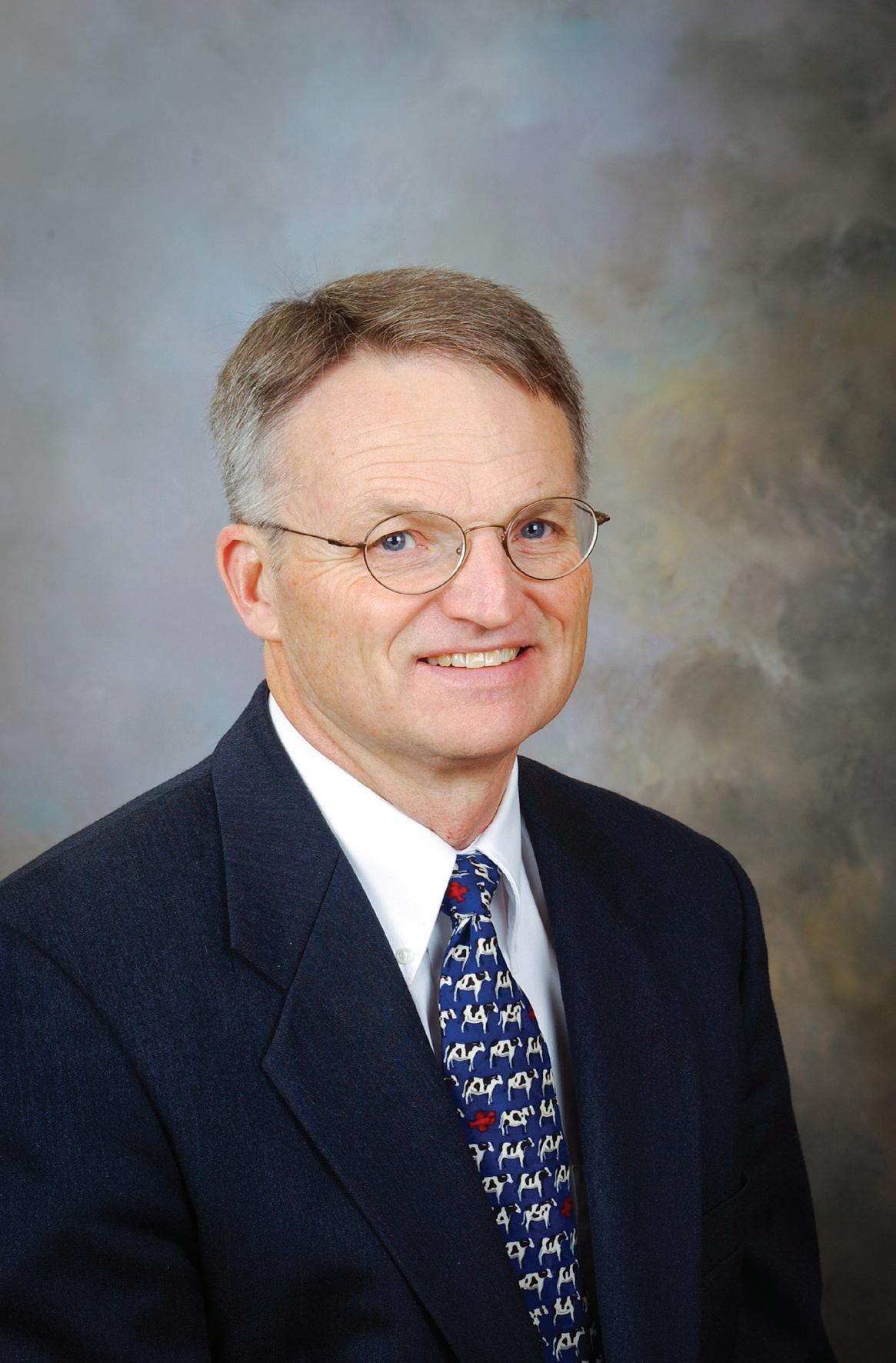
7 minute read
of
Dairyman. Writer. Reproductive physiologist. Researcher. Family man. Teacher. Man of faith. Volunteer. And occasional gardener. Dr. Jeffrey Stevenson, Kansas State University Animal Sciences and Industry (ASI) professor emeritus, is no doubt a man of many layers and vast knowledge.
BEFORE K-STATE
Advertisement
Stevenson was born June 15, 1951, in Salt Lake City, Utah, and spent the first 16 years of his life there before moving to Portland, Oregon, where he graduated from Greshman Union High School in 1969.
From the age of 14, Stevenson’s summers were spent working on his uncle’s farm in southeast Idaho where they raised grain, alfalfa and the occasional potato. They would milk anywhere from one cow by hand to 90 dairy cows in a milking parlor. He also had the opportunity to spend one academic year feeding experimental cows with a mentor of his, Dr. Melvin Anderson, in Logan, Utah, and one year milking 70 cows on a commercial operation in Smithfield, Utah. Those years were where his interest in dairy cows began and would eventually lead him to major in dairy science at Utah State University (USU).
Education
Stevenson attended USU for his undergraduate degree beginning in 1969. He started at USU as a physics major, and from 1970 to 1972 took a break to do ministry and missionary outreach in France and Switzerland.
Stevenson would return to USU in 1972, but this time enrolled in the college of agriculture, and in 1975 would graduate with his bachelor’s degree in dairy science. Though he could have gone back to a farm, Stevenson had a never-ending desire to learn, and as he puts it, “I felt like I did not know enough about the dairy cow.”
Stevenson would go on to study dairy science at Michigan State University (MSU) where he served as a research and teaching assistant until completing his master’s in 1977. He then attended North Carolina State University (NCSU) where he pursued his doctorate in animal physiology, while serving as a graduate teaching assistant in the Department of Animal Science, from 1977 to 1980, under the direction of Dr. Jack Britt. During his time at NCSU, Stevenson conducted research on lactating sows, with his dissertation covering the endocrinology of lactation and estrus in sows and continued to work and do reproduction research with dairy cows.
K-STATE
Stevenson began teaching at K-State in August 1980 and has been a part of the ASI faculty for the past 42 years. He began as an assistant professor with his appointment consisting of 70% research and 30% teaching, he was promoted to associate professor in 1986 and to professor in 1992. He has taught classes focusing on reproduction, dairy science and ovarian physiology. Specifically instructing the undergraduate courses of Farm Animal Reproduction (1980-2005), the dairy section of ASI 106 Dairy and Poultry Science (2005-2022), and a graduate course, Ovarian Physiology (ASI
832). In addition, he has served as the coordinator of the graduate seminar (ASI 890/990) for physiology and animal breeding students and was a faculty coordinator for the Dairy Teaching and Research Center and the Kansas Artificial Breeding Service Unit (KABSU).
Stevenson’s research has spanned several species, specifically evaluating synchronization of estrus and ovulation in dairy and beef cattle to accommodate timed artificial insemination (AI) and early embryo survival in cattle. Beginning in 1993 he began conducting studies in beef cattle AI in conjunction with multiple colleagues at other universities, collecting data on thousands of cows during spring breeding seasons until 2019.
He says his goal in researching cattle reproduction was to determine how to facilitate genetic progress by using artificial insemination more effectively and efficiently getting more cows pregnant to high genetic bulls, and using ovulation and estrus synchronization to refine timed AI and increased pregnancy rates using timed AI.
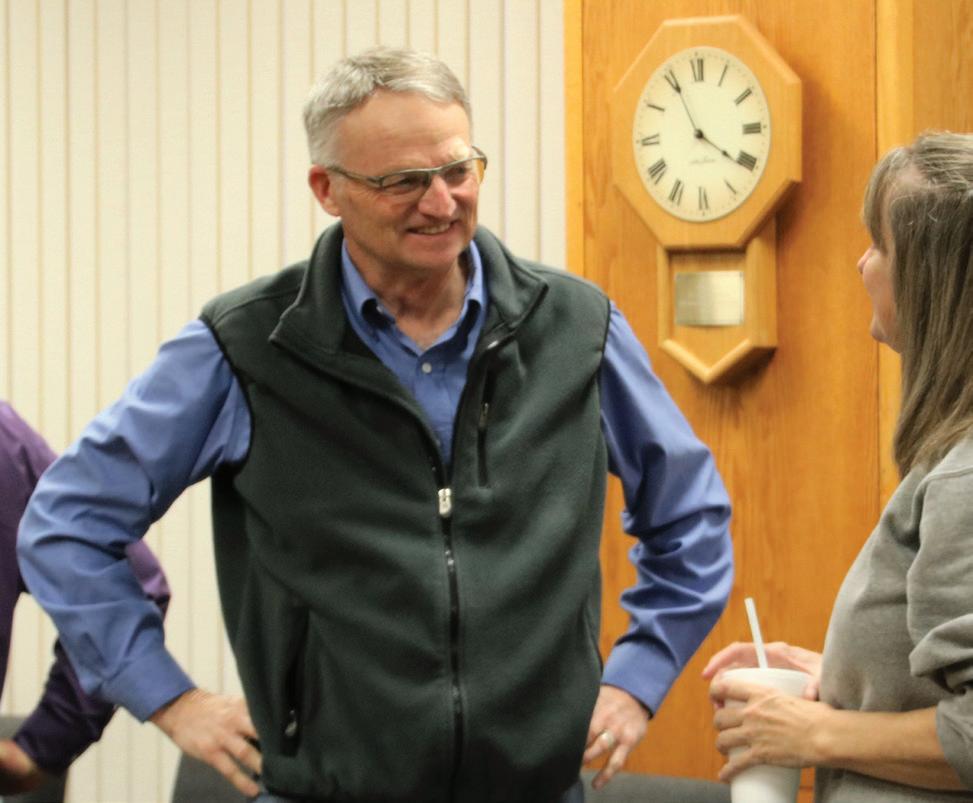
While at K-State, Stevenson worked with several faculty on experiments concerning AI research of beef and dairy cattle.
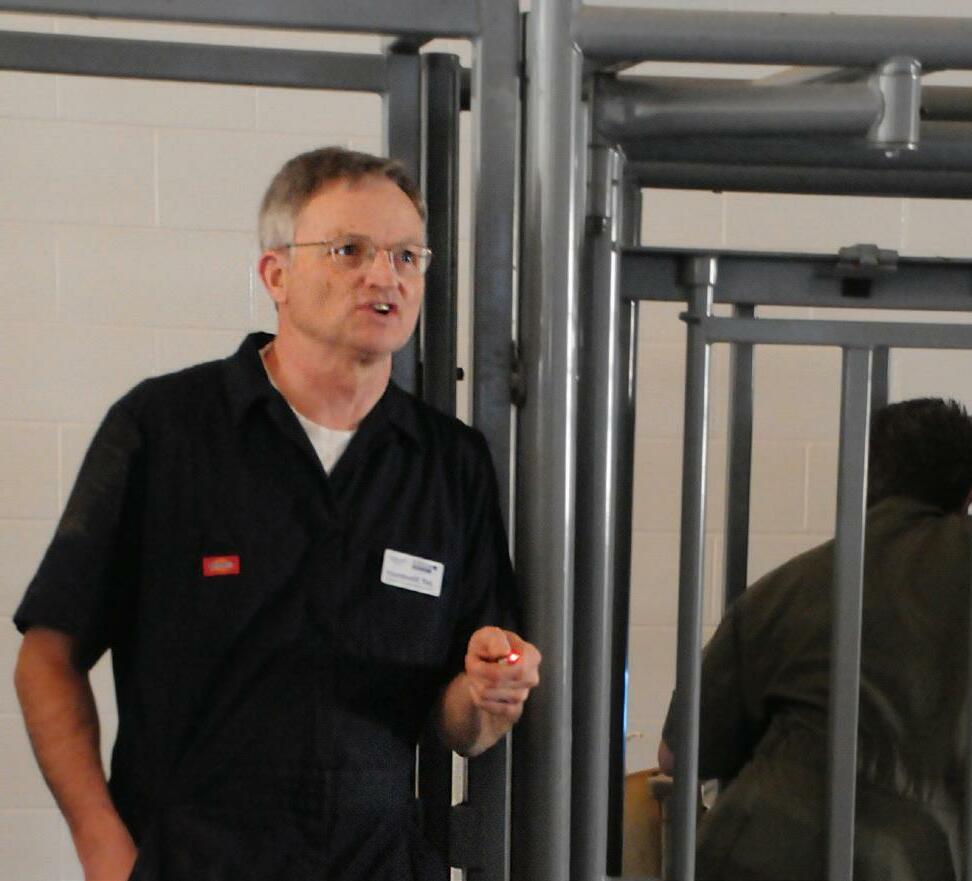
“One thing to know about Jeff is he is a really early riser and gets to places promptly. I remember, say if we were going to get started at 6 a.m., so to me, that would mean like 6:05, Jeff would have been there for awhile already. It would not even be light out and you could hear gates opening and him sorting cows. You could not beat him to the job,” says Dr. David Grieger, KSU ASI reproductive physiology professor.
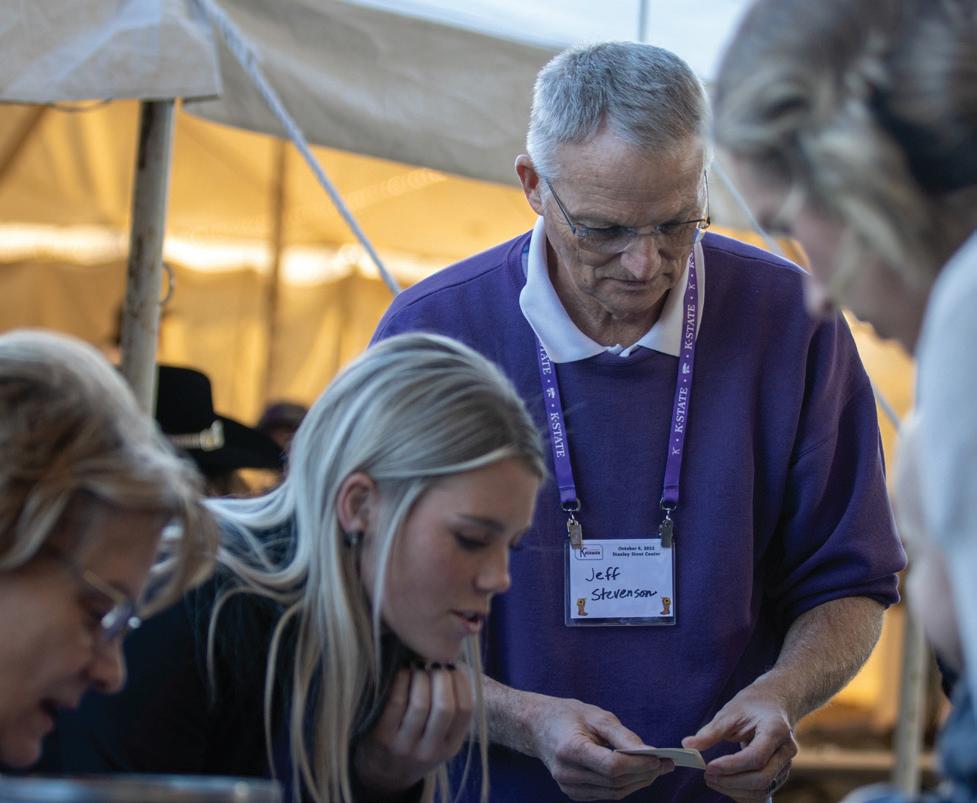
During his 47-year career, including five years as a graduate student, Stevenson published 197 scientific journal articles.
Stevenson was a contributing monthly columnist for Hoard’s Dairyman for 30 years (1992–2021), writing more than 275 articles during his tenure, a role he calls his “biggest contribution.”
“Although my research has been important, the satisfaction I felt was the greatest when I would go to conferences or speak with dairy farmers and veterinarians, and they would tell me how much they enjoyed reading my articles written in Hoard’s Dairyman,” Stevenson says.
“They were written for the layman, about practical topics that would help veterinarians and dairy producers in their reproductive programs. It was very similar to a virtual audience, it provided me the opportunity to teach dairy farmers research-based information that applies to getting cows pregnant. I would use research to direct what people do and I think that is the mission of a college of agriculture, to base what we do in science and not just anecdotes, or what we think is right. As you get older, you learn, you know less and less about what you thought you knew.”
“Dr. Stevenson was a contributing writer for Hoard's Dairyman for many years. His artificial breeding column provided practical research insights to dairy producers," says Maggie (Seiler) Gilles, former KSU ASI student and Hoard’s Dairyman associate editor. “He had a special talent and ability to take complicated research developments and make them approachable to dairy farmers. I most clearly recall the way he concluded his column with the encouragement – ‘Happy AI breeding!’
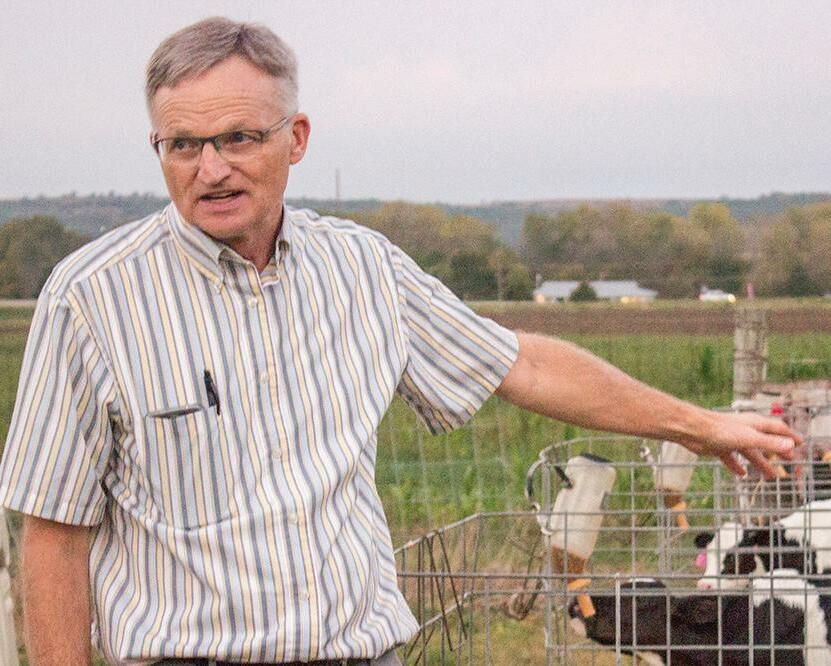
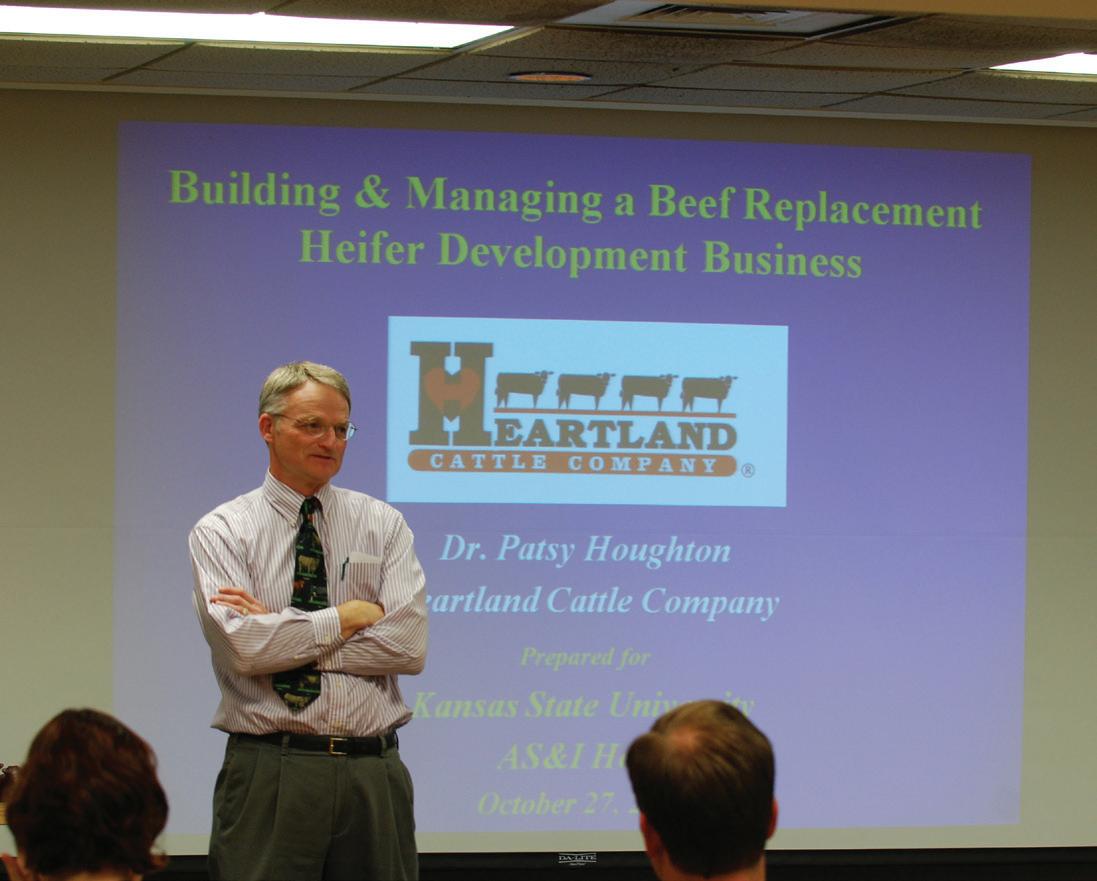
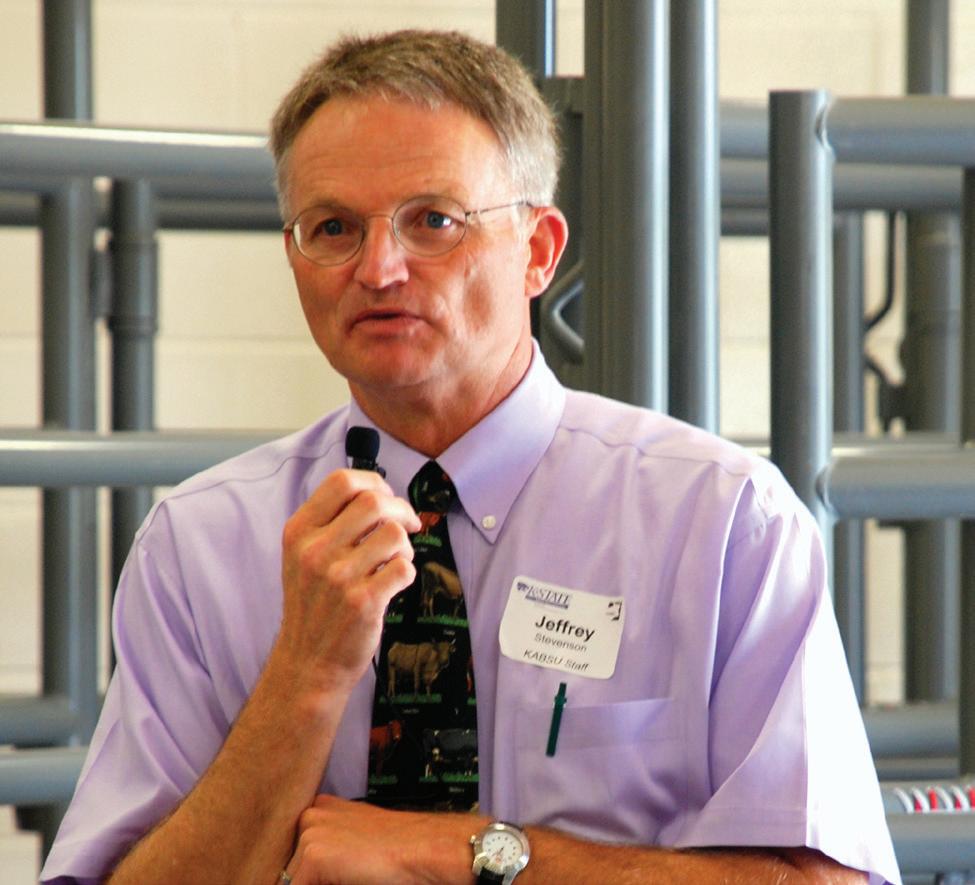
“During my role at Hoard's Dairyman, I ran into Dr. Stevenson several times at meetings and events. My favorite thing about him is that he always had time for a quick conversation to catch up and find out how I was doing. His encouragement of my writing and work was always so appreciated,” Gilles adds.
In addition to his writing, teaching and research, he has volunteered at the Stockmen’s
Dinner and with the K-State ASI Family & Friends Reunion. For 30 years was a co-advisor of the Little American Royal, working alongside Dr. Dave Nichols, Dr. Miles McKee, and later, Dr. Scott Schaake.
During his career he has had the opportunity to teach many, both in and outside of the classroom, and has been able to learn alongside and from his students. As a teacher, his advice is to never stop learning.
“You can’t separate your academic learning from your teaching. In other words, the more you teach principles, the better you understand them. They [students] taught me to be clearer and more consistent in the classroom so they could understand better. I have enjoyed interacting with students, some are truly interested in learning. I have had 34 master's and nine doctorate students, and they have all taught me something. I have learned patience and to make sure that I am doing what I can to help them learn. I have learned to be more concerned with deep learning of the material, than covering a bunch of material. I think that is something you must understand as a teacher. You learn that making it through all the curriculum is not as important as making sure students understand and grasp the major principles, and walk away with something they have learned,” says Stevenson. “It is very fulfilling when students come back to you after being in the real world and practicing principles and tell you that they use them and believe them. I think that is a measure of a good teacher, is what your students can tell you in 10 or 20 years.”
Future Plans
Stevenson has no definite plans for the future and says that it is going to be a learning experience to figure out what retired life is like.
“Honestly, I am going to miss my job, I have mixed emotions about retiring. My last day of work was June 10th and five days later I turned 71, so I have delayed retirement. You know, right now I don’t have any plans to do anything special, I kind of have to get retired first and figure out what I am going to do with my time. Honestly, it is a little scary, which is why I have not retired before now,” he says.
BEYOND K-STATE
In his personal life, he is dedicated to his family, his community and his church. He married his wife, Barta, in 1974 while he was attending USU. For most of his adult life, he has been involved in Boy Scouts and earned the rank of Eagle Scout as a youth. He has also received the adult scouting high honor of the Silver Beaver Award. From 1992 to 2019, he was involved in the local troop through his church and at the district level, which includes 30 Boy Scout troops and 25 cub scout packs, being a District Commissioner and member of the Key Three District Leadership Team. He also attended two separate week-long adult leadership trainings at the Philmont Scouting Ranch in Cimarron, New Mexico.
Three years ago, he stepped away from this role. He says, “Honestly, I miss it. I enjoyed being with the young men and taking them on scouting trips and camps.”
He also has a garden and continues his research into genealogy and family history. He is the oldest son of three siblings and takes the lead in planning family reunions, virtual zooms, and even writes a family newsletter that goes to three generations.
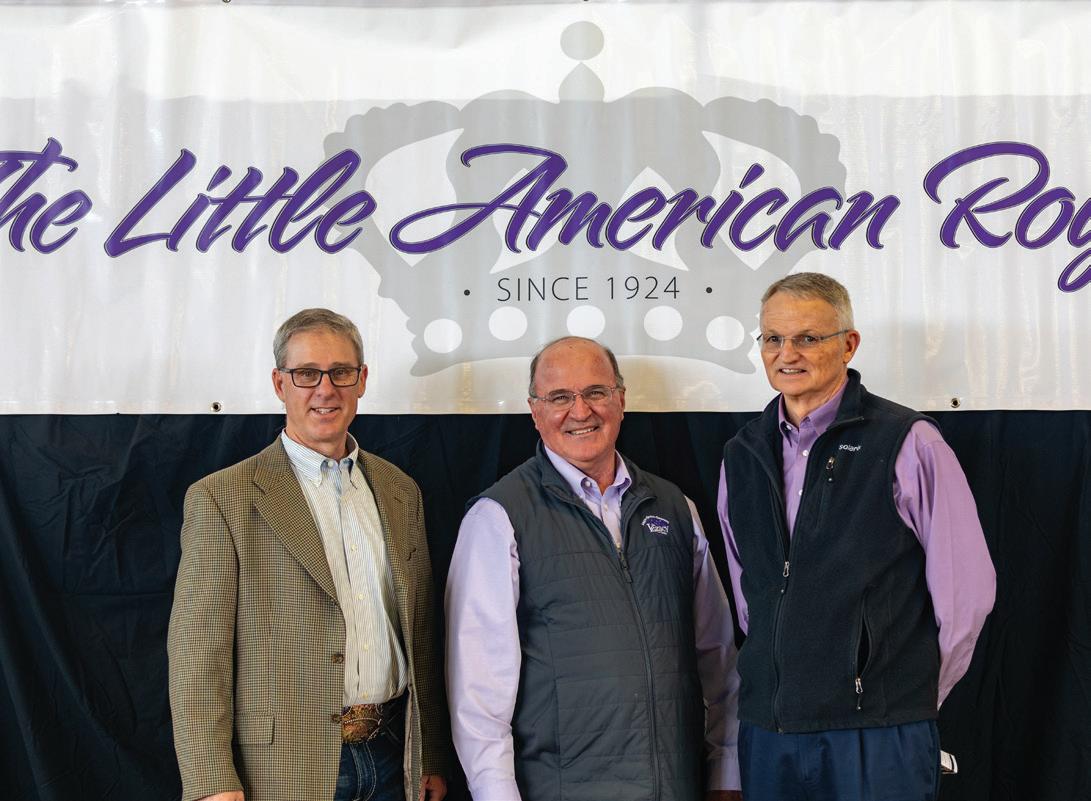
He has been an active member in his church, The Church of Jesus Christ of Latterday Saints, and is a lay leader who has been called to preside over the congregation. In addition, he and his wife volunteered monthly for 10 years at their temple in Kansas City.
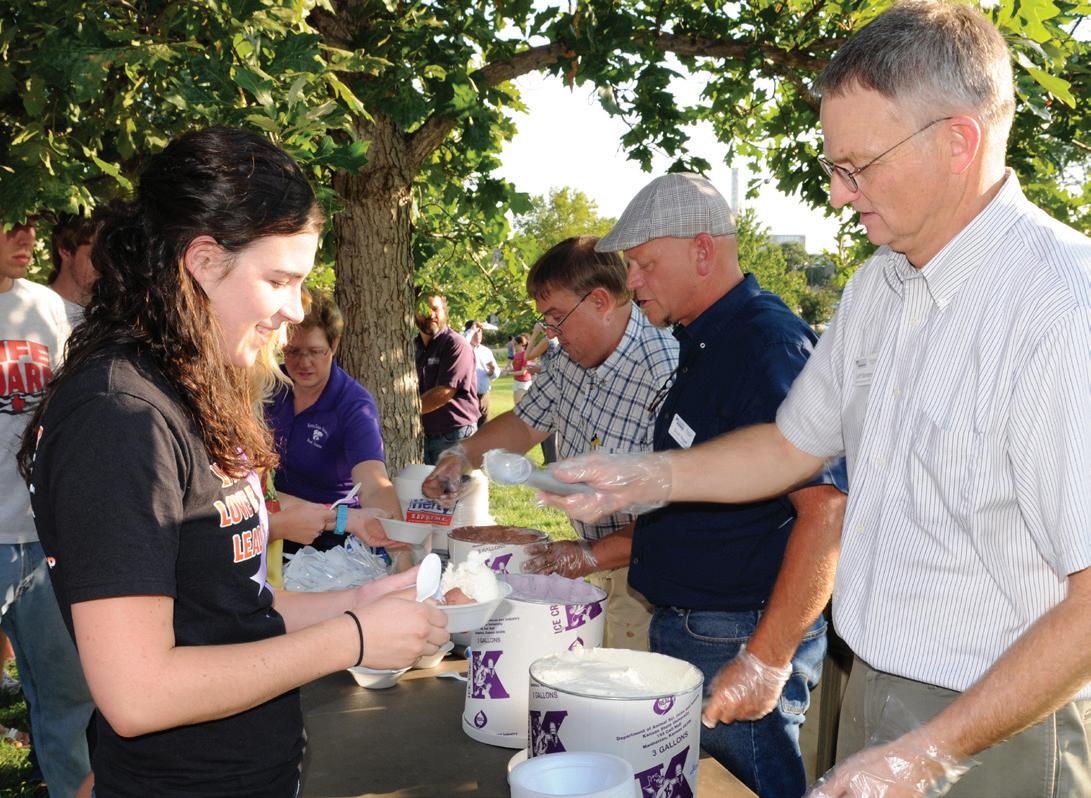
“My job has been really fun. Being a professor is probably the best job in academia. I have had colleagues that have become department heads and administrators, but they always said that the best job is being a professor. And what I have always liked about it is the interaction with young people in the classroom. I get to work closely with graduate students and, of course, animals. It has really been a fun career,” Stevenson says with a smile.
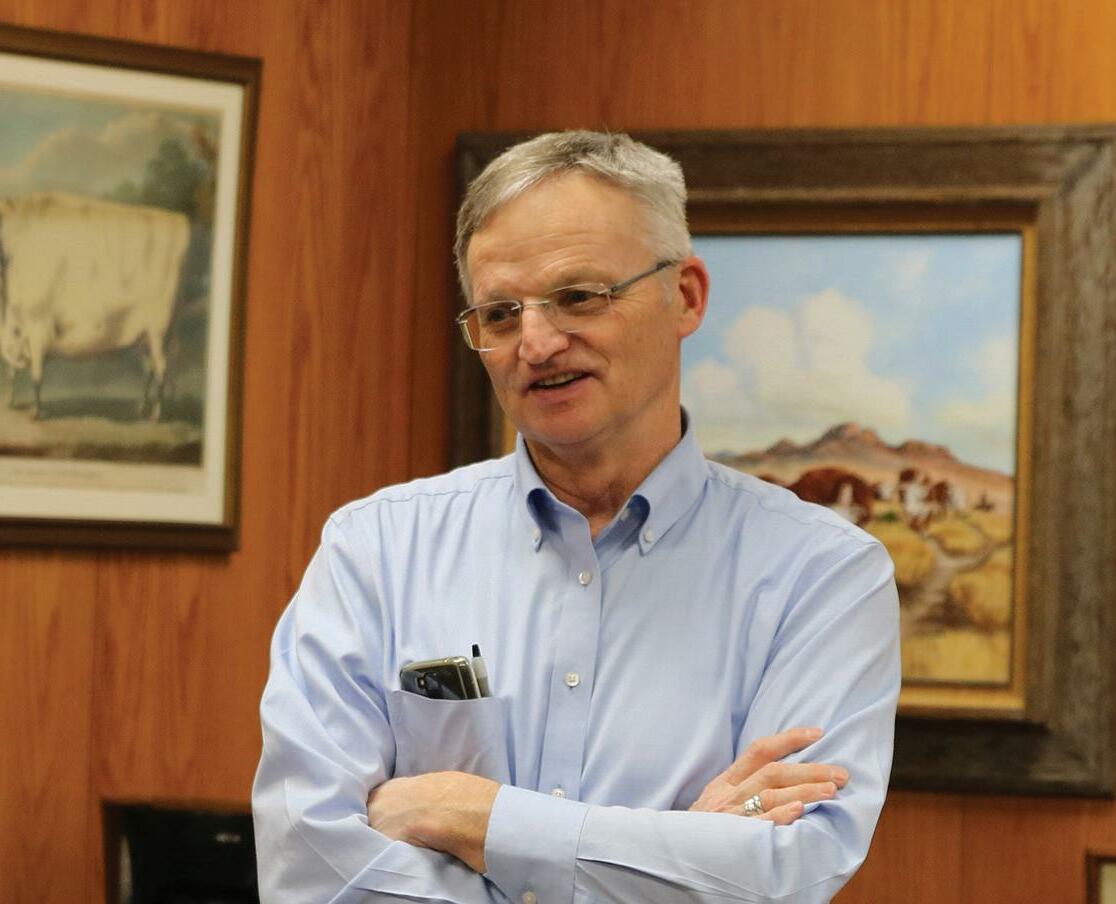
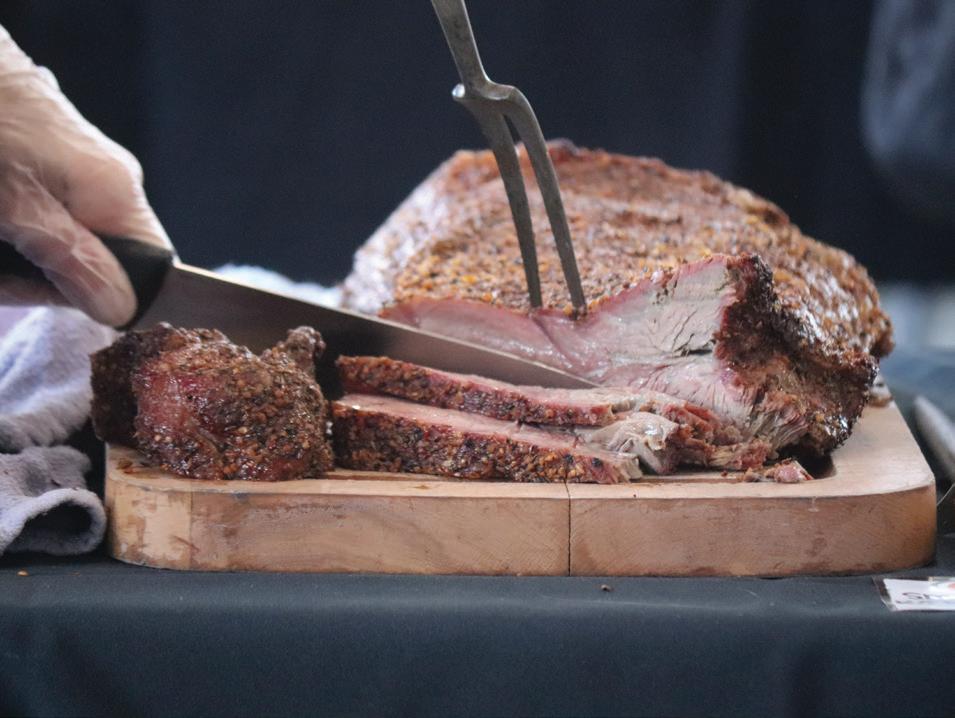
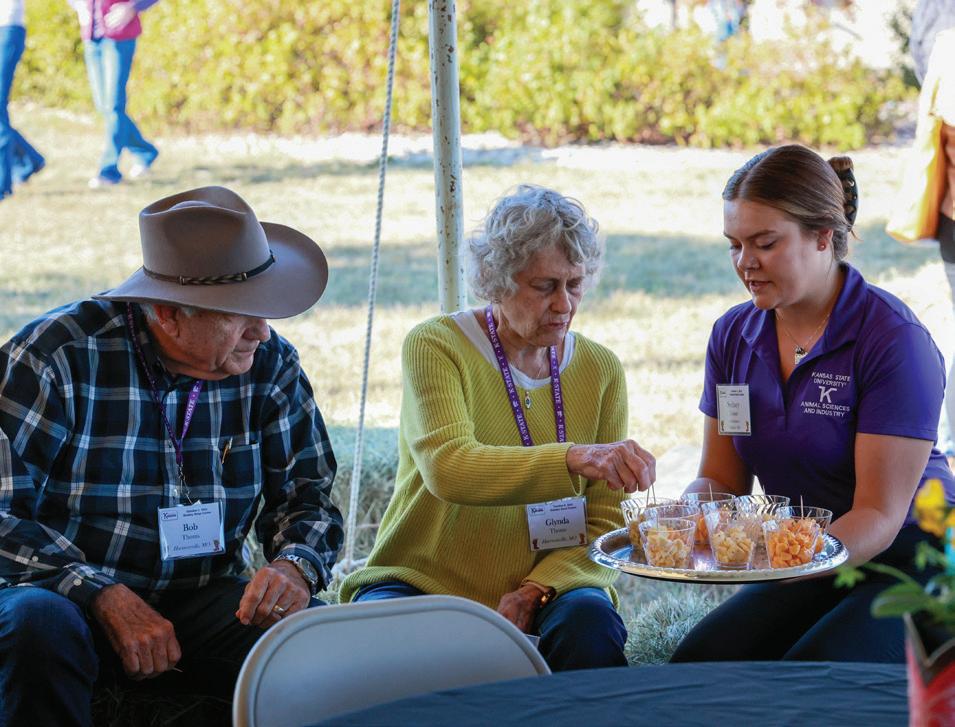
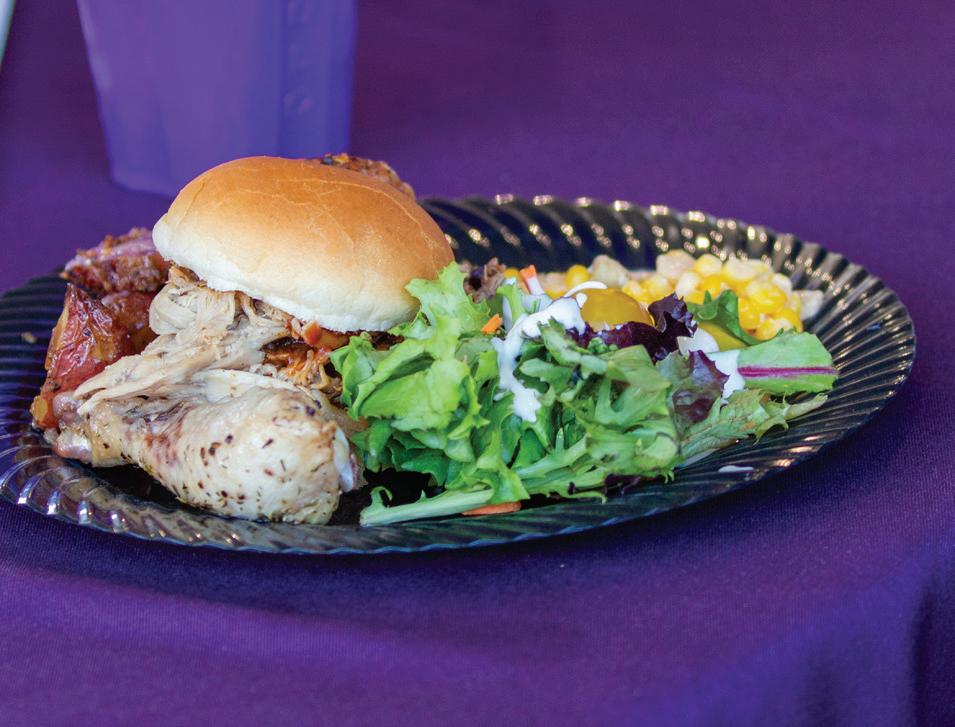
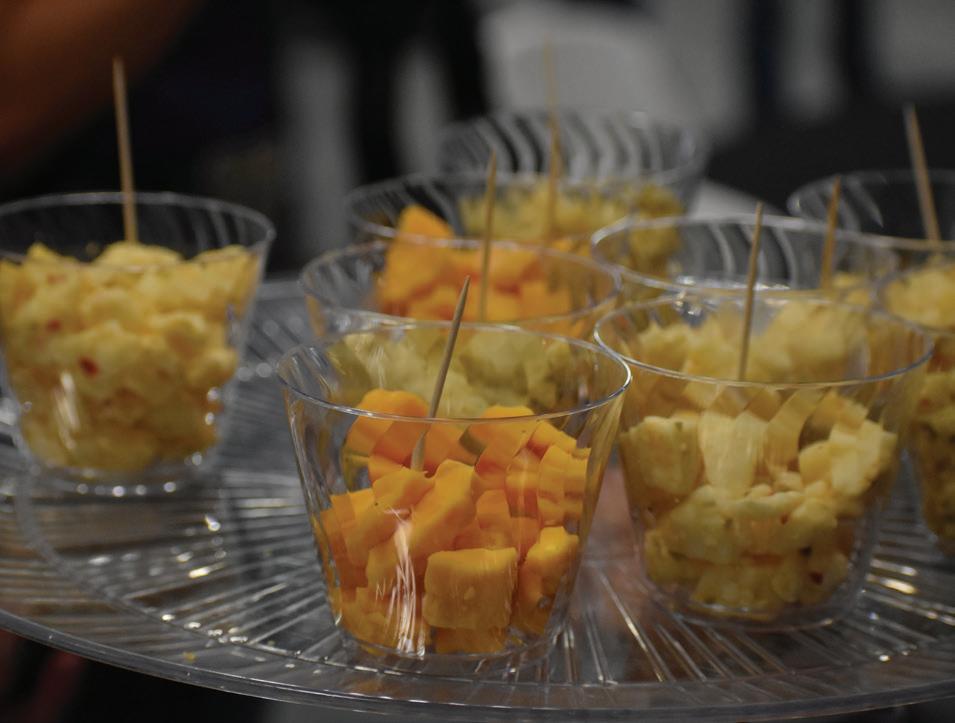
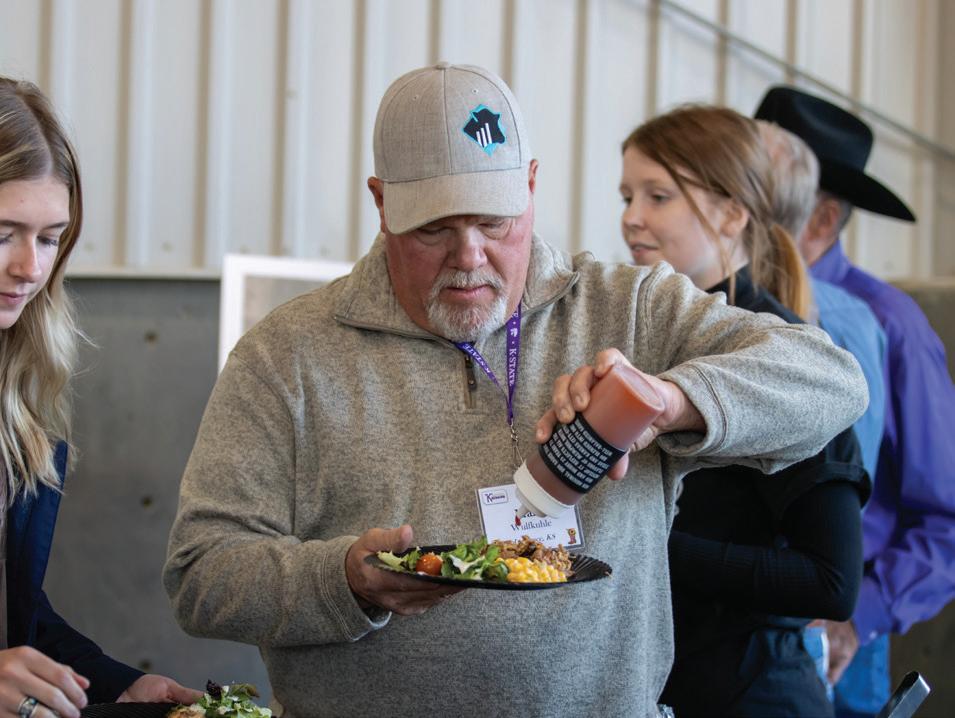
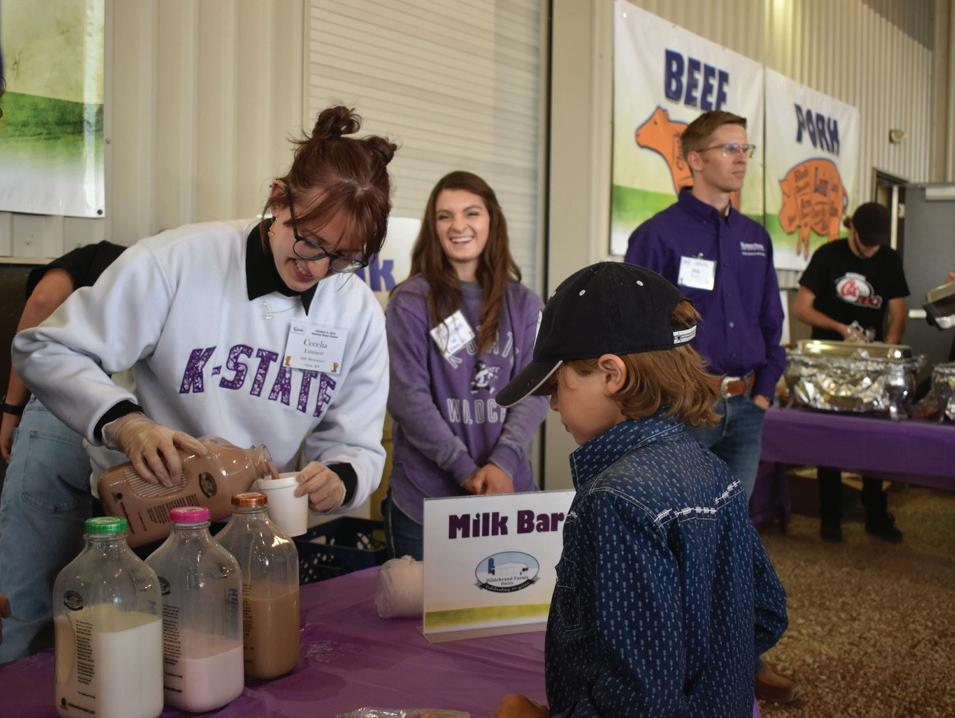
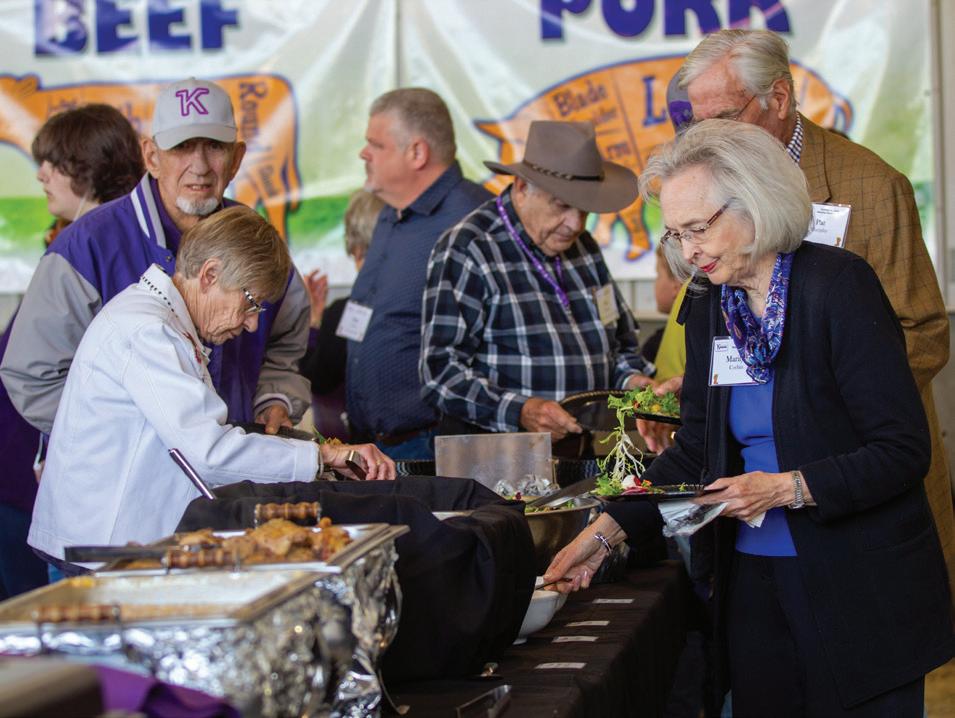
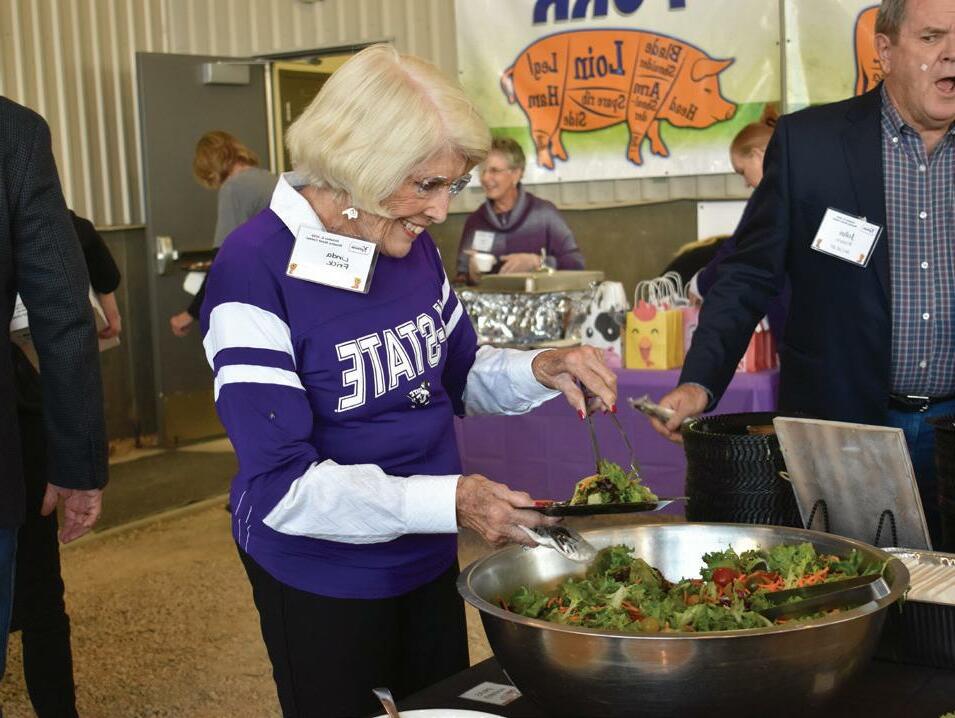
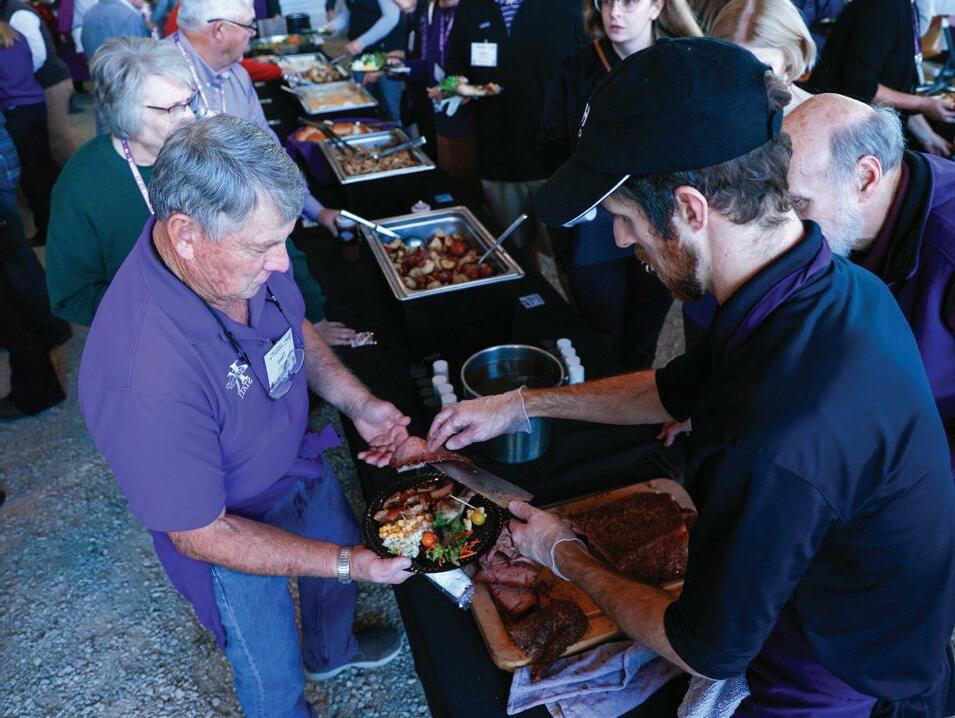
Family. Friends. Fellowship. Great food. Four characteristics that made the 2022 reunion memorable.
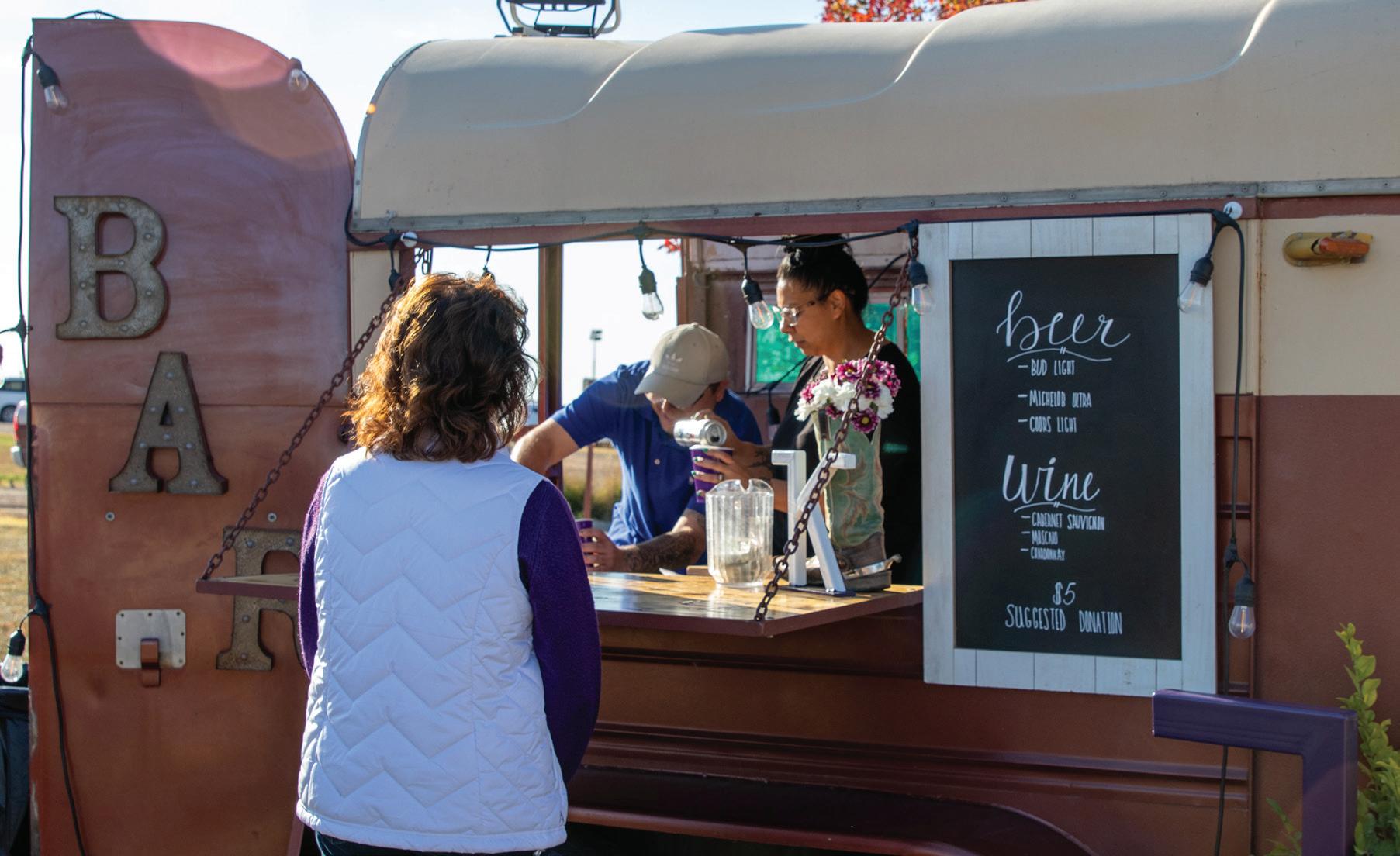
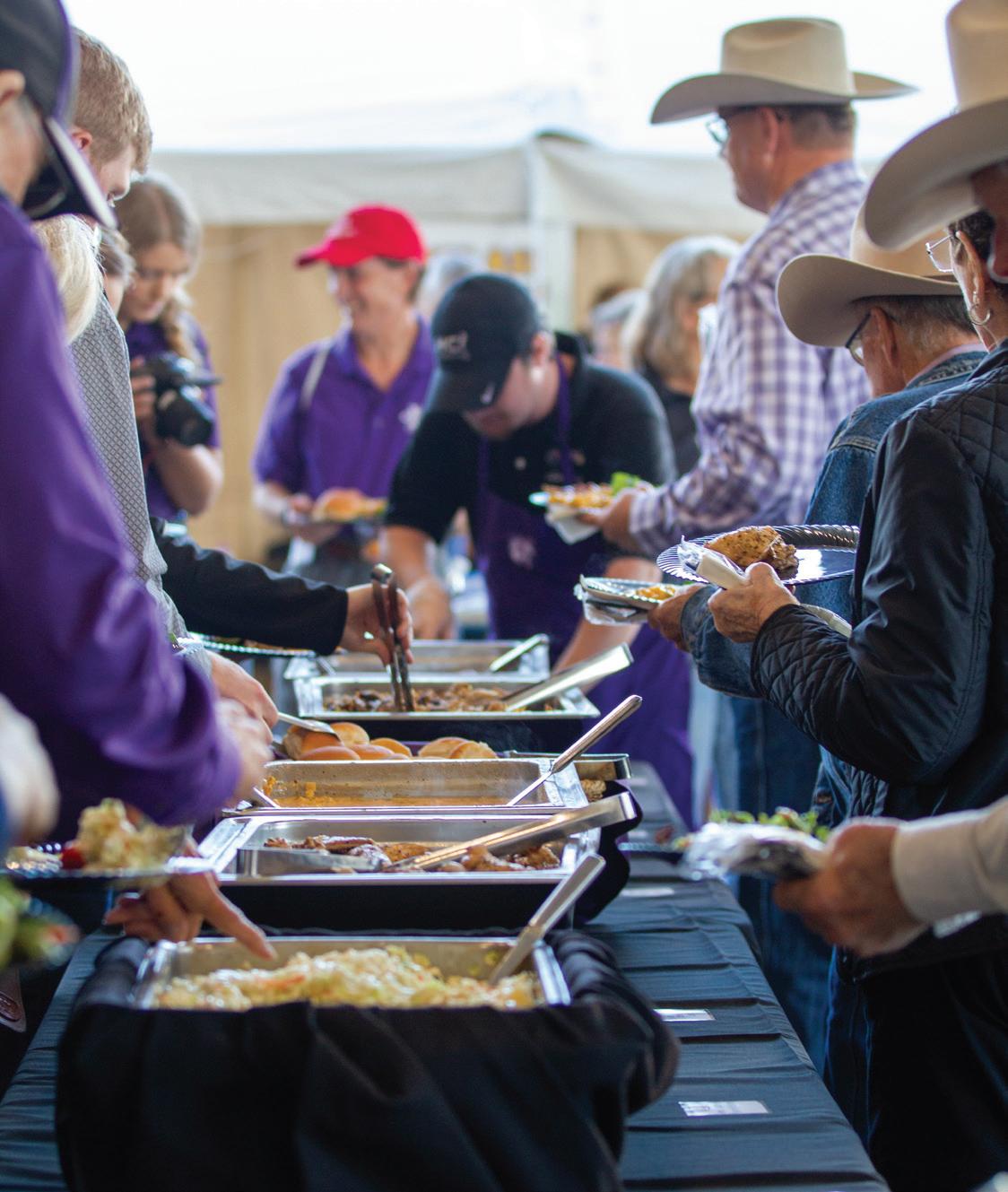
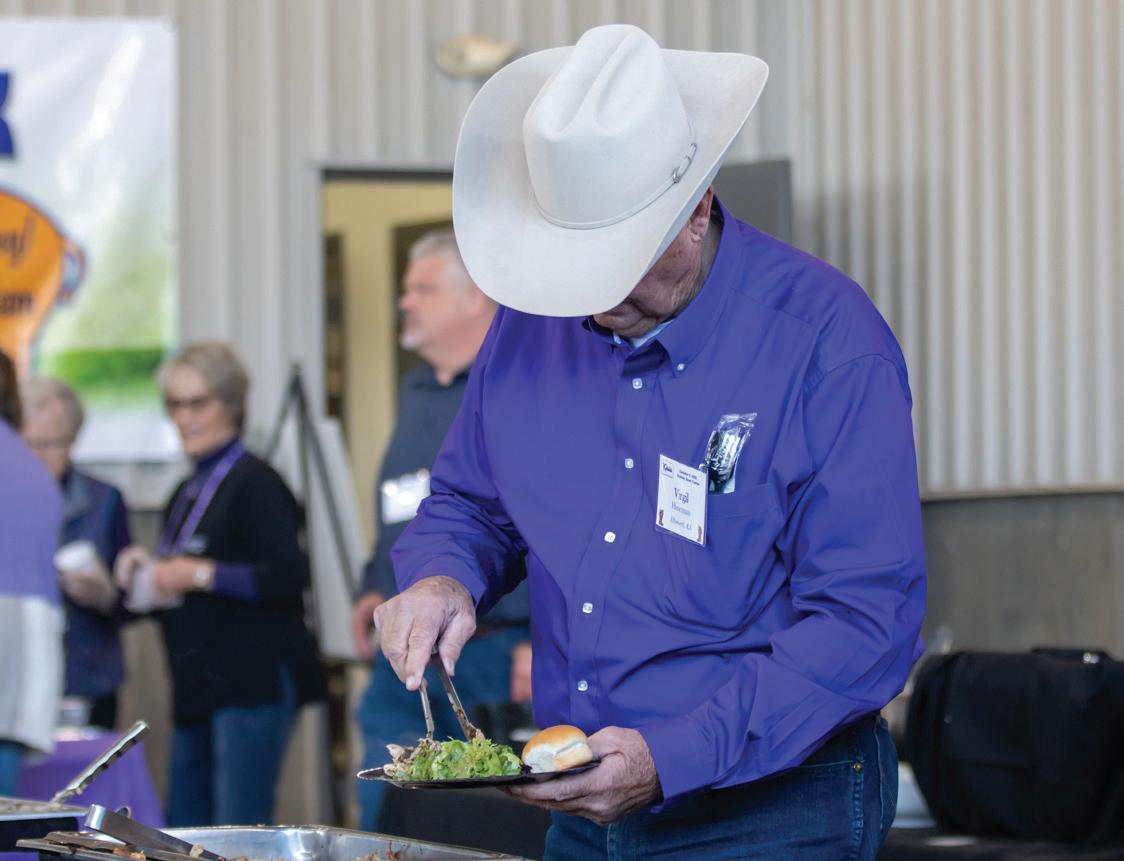
Cox Bros. BBQ and Coco Bolos in Manhattan catered the food for the evening. On the menu: pulled pork, smoked KC strip loin, herb roasted chicken and sides including garden salad, pineapple coleslaw, cajun creamed corn and roasted red potatoes. In addition, a little rancher’s meal featured macaroni and cheese, a hot dog or hamburger and a dessert was offered to the future K-Staters. Call Hall ice cream served by the K-State Livestock Judging Team topped off the evening.










